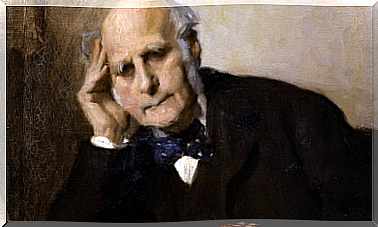Emotional Contagion: How Do We Transmit Our Emotions To Others?

Every time we interact with one or more people, the mechanisms of emotional contagion are set in motion.
In this way and according to Daniel Goleman, each of us is largely responsible for how we determine the feelings of the people with whom we interact every day, both positively and negatively. But… what are the mechanisms responsible for this happening?
Emotions are contagious

The transmission of emotions is a primitive and unconscious process that acts as a synchrony and part of our survival. Through various mechanisms, people develop an emotional dance to get in tune through the mimicry of facial expression. It all starts with a smile, an angry expression or a few tears. It is enough to see someone express an emotion for that same state to be evoked in us.
Although genetically we are all prepared to be part of this contagion, there are people who have a greater capacity to transmit emotions or to be infected by others. Hypersensitive people who are like emotional sponges capable of absorbing any emotional apex that occurs around them, such as PAS (Highly Sensitive People). On the contrary, there is also the other side of the coin, those people incapable of feeling emotions like psychopaths. But who are responsible for this emotional contagion to occur?
The role of mirror neurons in emotional contagion
In our brain there is a group of neurons that according to Daniel Goleman function as a kind of “neuronal wifi” to connect with other brains and reflect in us what we observe in others. They are mirror neurons. They are responsible, for example, that we get excited when we watch a movie or the shock we feel when we see a person take a hit.
When mirror neurons are activated, they activate the same brain circuits as those that are active in the person we are observing. So that you can feel an emotion as your own, even if you are not executing it. Thus, thanks to them and other areas of our brain, such as the insula, the phenomenon of emotional contagion can be explained.
But which person is the one that sets the emotional tone in a group? According to different studies, the most emotionally expressive member is a group of equals. Now, when it comes to a context such as work or a class, in which there are differences in power, it will be the most powerful person who marks the emotional state of the rest.

Empathy vs emotional contagion
Many people when talking about the phenomenon of emotional contagion assimilate it to empathy but although they have certain points in common and at some point one uses the other, they are not the same.
Empathizing is putting yourself in the place of the other, taking into account their perspective on life and their feelings. An art that not everyone is capable of igniting in their relationships with others but that would be of great use if they did. But this putting yourself in the place of the other does not imply getting rid of your own feelings and emotions. It is simply taking into account that it exists and trying to understand it.
On the other hand, emotional contagion means making the emotions of others as one’s own and not knowing how to get rid of them, suffering their consequences.
To understand the difference, we can think that empathy is like diving into water and emotional contagion is like drinking a glass of water. In the first experience we do it to know and understand the behavior of this fluid and in the second so that it becomes part of us.
Now, this difference does not imply that at some point they are not needed and it is that to get to empathize a small dose of emotional contagion is needed, but without experiencing an emotional kidnapping. This is not to say that emotional contagion is bad; The truth is that it takes away our autonomy, but if the emotions that spread are positive, welcome! Who does not like that silly laugh that we are unable to stop and that others infect us?
To reflect, we leave you a video on the subject and a question: What emotions do you want to transmit to others?









